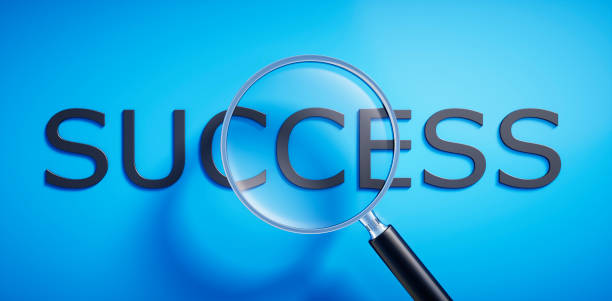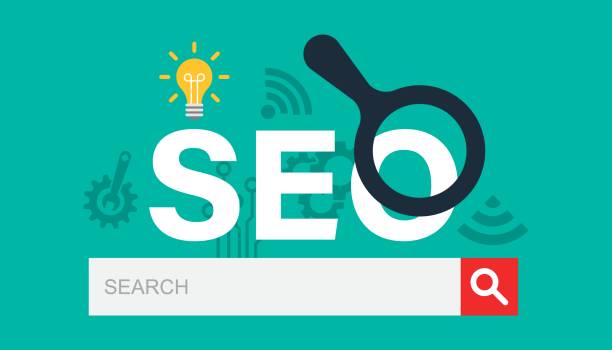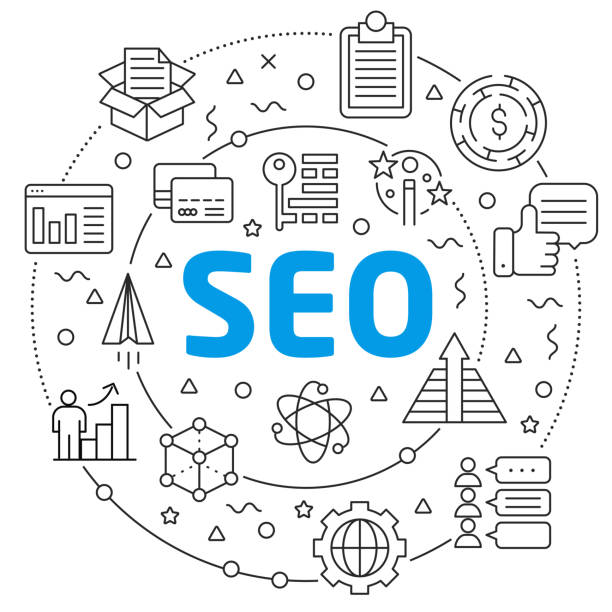An Introduction to SEO and Its Importance in the Digital World

In the current digital age, online visibility is of vital importance.
“SEO” or Search Engine Optimization, is a set of practices that optimize websites to achieve better rankings in search results such as Google, Bing, and Yahoo.
The main goal of #SEO is to increase the quality and quantity of website traffic through organic (unpaid) search results.
This process involves understanding how search engines work, the keywords users employ, and creating content that is both valuable to users and understandable and indexable by search engine crawlers.
By correctly understanding the principles of SEO, you can ensure that your website stands out among competitors and reaches your target audience.
This is a continuous #learning process that requires updating knowledge and strategies to always keep pace with changes in search engine algorithms.
The importance of #online_visibility grows daily, and SEO has become a powerful tool to achieve this goal.
Does your current website build the trust that potential customers should have in your business? If the answer is no, it’s time to get your professional and impactful corporate website with Rasavob.
✅ Fully customized design tailored to your brand identity
✅ Increased lead generation and business credibility in the eyes of customers⚡ Contact us for a free consultation!
Types of SEO and Their Fundamental Differences

SEO is a vast field divided into various sections, each with its own approach and goals.
Understanding these types is crucial for a comprehensive and effective strategy.
The three main pillars of SEO are: On-Page SEO, Off-Page SEO, and Technical SEO.
On-Page SEO refers to all optimizations performed directly on your website, including content optimization, title tags, meta descriptions, URL structure, and proper keyword usage.
This section is entirely within your control and is crucial for creating high-quality and relevant content.
Off-Page SEO involves activities outside your website that help increase its credibility and authority, such as backlink building (links from other sites to your site), social media activity, and brand mentions online.
These activities show search engines that your website is a credible and trustworthy source.
Finally, Technical SEO addresses the technical aspects of the website that affect its crawling and indexing by search engines, including site loading speed, mobile-friendliness, site structure, and the use of the HTTPS protocol.
This explanatory and specialized part of SEO ensures that search engines can easily find and correctly understand your content.
Each of these types complements the others and should be considered simultaneously to achieve high rankings in search results.
Keyword Research and Its Role in Successful SEO

Keyword Research (Keyword Research) is the heart of any successful SEO strategy.
This process involves finding the phrases and words that your target audience uses in search engines to find products, services, or information related to your business.
Specialized and precise keyword research helps you create content that accurately targets user needs and significantly increases the visibility of your website.
To conduct this research, various tools are available, such as Google Keyword Planner, Ahrefs, Semrush, and Moz Keyword Explorer, which show you search volume, competition level, and related keywords.
Furthermore, you should pay attention to the User Intent behind each keyword; is the user looking for information (informational keywords), intending to buy (commercial keywords), or searching for a specific website (navigational keywords)?
This is a fundamental guide for content creation.
Choosing long-tail keywords (three words or more) often results in higher conversion rates and less competition.
These keywords are more precise and usually clearly indicate user intent.
A deep understanding of keywords forms the foundation of a sustainable SEO strategy, and without it, your optimization efforts may be fruitless.
| Keyword Type | User Intent | Example |
|---|---|---|
| Informational | Acquiring Knowledge | How to cook Ghormeh Sabzi |
| Navigational | Accessing a Specific Site | Digikala |
| Commercial | Purchase Intent | Buy Asus Laptop |
| Investigational | Comparing Products/Services | Best Smartphones 2024 |
Content Optimization for SEO and Audience Attraction

Content is king; this phrase holds truer than ever in the world of SEO.
Producing high-quality content optimized for search engines is one of the most important factors for achieving high rankings and attracting an audience.
Your content should not only be optimized for target keywords but also provide real value to users and answer their questions.
This includes articles, blog posts, product pages, service pages, videos, and images.
When creating content, pay attention to Keyword Density, but avoid Keyword Stuffing, as this can harm your ranking.
Using appropriate headings (H1, H2, H3), short paragraphs, relevant images with proper Alt tags, and internal links to other related pages on your website all contribute to improving your content’s SEO.
Your content should be readable, engaging, and shareable.
Engaging content can increase user interaction and boost their time spent on the site, which is a positive signal for search engines.
Furthermore, regularly updating old content and adding new information can help maintain the freshness and credibility of your content, leading to continuous improvement in your ranking.
This is a comprehensive guide for producing optimized and effective content.
Tired of your company’s website not being seen as it should be, losing potential customers? Rasavob is your answer! With our specialized corporate website design services:
✅ Enhance brand credibility and gain customer trust
✅ Attract targeted sales leads
⚡ Contact us now for a free consultation!
Technical SEO and Site Structure Optimization for Crawlers

Technical SEO is a vital part of SEO that many webmasters overlook, even though it forms the core infrastructure for your site’s visibility.
This section of SEO deals with issues that directly affect search engines’ ability to Crawl and Index your website.
Optimizing Page Speed, a crucial ranking factor, is achieved through image compression, code optimization, and the use of a CDN (Content Delivery Network).
Mobile-Friendliness is also highly important, as most users today access the internet via mobile devices.
Using the HTTPS protocol for site security, creating an XML Sitemap to help search engines find all your important pages, and a Robots.txt file to manage crawler access to different parts of the site are other aspects of technical SEO.
Clean and logical URL structures also help search engines and users better understand page content.
These aspects may seem technical, but they are essential to ensure that your efforts in On-Page and Off-Page SEO bear fruit.
A strong technical structure provides the foundation for a healthy and visible website in search engines.
Backlink Building and Off-Page SEO: Increasing Credibility and Authority

Off-Page SEO, especially Link Building, is one of the most powerful ranking factors in SEO.
Backlinks, or inbound links from other websites to your website, act like a vote of confidence.
The greater the number and quality of these links, the more credible and trustworthy search engines consider your website.
However, quality is more important than quantity; a link from a reputable website relevant to your field has far greater value than several links from low-quality or irrelevant sites.
Backlink building strategies include creating exceptionally high-quality content that naturally attracts links, Guest Writing on relevant websites, Broken Link Building, and collaborating with influencers and publishers to disseminate your content.
The backlink building process requires a strong analytical approach to ensure that the received links are not only beneficial but also compliant with search engine algorithms to prevent penalties.
Social media activity and increasing Brand Awareness also indirectly contribute to Off-Page SEO, as they lead to direct searches for your brand name and increase the likelihood of receiving links.
Local SEO and Mobile SEO: Visibility in Specific Searches

Local SEO (Local SEO) and Mobile SEO (Mobile SEO) are two specialized yet very important areas in the world of search engine optimization, each focusing on specific user needs.
Local SEO is crucial for businesses with physical customers (such as restaurants, stores, clinics).
Its goal is for your business to appear in local search results when users are looking for your products or services near you.
This includes optimizing your Google My Business profile, earning positive customer reviews, and ensuring the accuracy of NAP (Name, Address, Phone number) information across the web.
This is a practical guide for local businesses.
On the other hand, Mobile SEO refers to optimizing your website for an excellent user experience on mobile devices.
Given the significant increase in mobile internet usage, Google and other search engines place great importance on responsive and fast-loading websites on mobile.
AMP (Accelerated Mobile Pages) are also a method to speed up page loading on mobile.
These two aspects of SEO ensure that you reach your specific audience, both geographically and in terms of the device used.
Understanding and implementing these strategies can bring targeted and high-quality traffic to you.
| Feature | Local SEO | Mobile SEO |
|---|---|---|
| Main Goal | Visibility in Geographical Searches | Optimized User Experience on Mobile Devices |
| Main Tools | Google My Business, Local Directories | Google Mobile-Friendly Test, AMP |
| Search Example | “Coffee Shop Near Me” | Any Search on Mobile |
| Important Factors | NAP, Customer Reviews, Local Signals | Loading Speed, Responsiveness, Mobile UX |
Video SEO and Image SEO: Optimizing Visual Content

Visual content, including videos and images, plays an increasing role in SEO strategies.
Optimizing this type of content can help your website rank in image and video search results and attract more traffic.
For Video SEO, you should pay attention to several key points: fill video titles and descriptions with relevant keywords, upload video files with low size and high quality, use transcripts for videos so search engines can understand spoken content, and create a Video Sitemap.
Publishing videos on platforms like YouTube, which is itself a powerful search engine, is also very important.
Image SEO involves using descriptive file names, accurate and keyword-rich Alt tags (alternative text), compressing images to improve site loading speed, and using optimized image formats like WebP.
Video and image content are naturally engaging and can significantly increase user interaction.
This not only helps your ranking but also improves user experience.
A comprehensive SEO strategy should include optimizing all forms of content, as users seek information in various formats, and visibility in each area can create a competitive advantage.
Losing potential customers due to an unprofessional website? Rasavob is your answer! With our specialized corporate website design services:
✅ Elevate your business’s credibility and standing
✅ Experience attracting more targeted customers
⚡ Act now to get a free consultation!
Monitoring and Analyzing SEO Performance: Key Tools and Metrics

After implementing SEO strategies, continuous monitoring and performance analysis are essential to identify strengths, weaknesses, and opportunities for improvement.
Analytical tools like Google Search Console and Google Analytics are invaluable resources for obtaining precise analytical data.
Google Search Console helps you see technical site issues, the keywords through which you attract traffic, and how Google indexes your pages.
In contrast, Google Analytics provides information about site traffic, user behavior (such as bounce rate and time on site), traffic sources, and conversions.
Key SEO metrics include keyword rankings, organic traffic, click-through rate (CTR), conversion rate, and backlinks.
By regularly monitoring these metrics, you can assess the impact of changes made and adjust your strategies based on real data.
This analytical section of SEO allows you to make data-driven decisions and prevent resource waste.
Furthermore, keeping up with news and algorithm updates from search engines through specialized blogs and reputable news sources helps you stay one step ahead and align your strategies with daily changes.
The Future of SEO and New Trends Towards Intelligent User Experience

The world of SEO is constantly evolving, and what is effective today may no longer be effective tomorrow.
A look at the future of SEO shows that the focus is shifting from mere keywords towards user intent and a more comprehensive user experience.
Artificial Intelligence (AI), especially in the form of advanced search engine algorithms like Google’s RankBrain, plays an increasing role in understanding and ranking content.
Voice Search (Voice Search) is also growing, and optimizing for it requires understanding natural language and conversational questions that users ask.
Video content and podcasts will become more important, and optimizing for them will be crucial.
Core Web Vitals and User Experience (UX) will become more important ranking factors, as Google aims to provide the best possible experience to users.
Engaging and thought-provoking content that deeply answers user needs will continue to be king.
Ultimately, SEO is no longer just about ranking, but about creating a comprehensive and valuable online experience for users.
For future success, websites must focus on high-quality content, excellent user experience, and adaptability to emerging technologies.
This is a great challenge and, at the same time, a unique opportunity for growth.
Frequently Asked Questions
| Question | Answer |
|---|---|
| What is SEO? | SEO, or Search Engine Optimization, is the process of increasing the quality and quantity of website traffic by improving the site’s ranking in natural (organic) search results like Google. |
| What are the main types of SEO? | SEO is divided into three main categories: On-Page SEO, Off-Page SEO, and Technical SEO. |
| What does On-Page SEO include? | On-Page SEO involves optimizing elements within the website, such as keywords, Title Tags, Meta Descriptions, content, URL structure, images, and internal links. |
| What is Off-Page SEO? | Off-Page SEO refers to activities outside the website that help improve its ranking, such as Backlink Building, social media marketing, and Brand Mentions. |
| What is Technical SEO? | Technical SEO deals with optimizing the technical aspects of a website to help search engines crawl and index it better. This includes site speed, mobile-friendliness, site structure, Sitemaps, and the Robots.txt file. |
| What role do Keywords play in SEO? | Keywords are phrases that users enter into search engines. Proper and targeted use of relevant keywords in content and site elements helps search engines understand your page’s topic and display it for relevant searches. |
| What is a Backlink and why is it important? | A backlink, or inbound link, is a link from one website to another. Backlinks act as a “vote of confidence” from other sites for search engines and play an important role in a site’s credibility and ranking increase, especially if they are from reputable sites. |
| What impact does quality content have on SEO? | High-quality, relevant, comprehensive, and unique content not only attracts and retains users but also shows search engines that your page is valuable. This helps improve ranking, reduce Bounce Rate, and increase user time on site. |
| Why is website loading speed important for SEO? | Website loading speed is a critical ranking factor for Google. Faster websites provide a better user experience, have lower bounce rates, and are preferred by search engines. |
| Is SEO a one-time process? | No, SEO is a continuous and long-term process. Search engine algorithms are constantly changing, competition is increasing, and site content also needs updates. Therefore, SEO requires continuous monitoring, analysis, and optimization. |
And other services of Rasa Web Advertising Agency in the field of advertising
Smart Website Development: A professional solution for customer acquisition focusing on real data utilization.
Smart Advertising Campaign: Professional optimization for customer acquisition using SEO-driven content strategy.
Smart Advertorial: A novel service for increasing customer acquisition through custom programming.
Smart Advertising Campaign: A combination of creativity and technology for online growth through custom programming.
Smart Link Building: Revolutionize SEO ranking improvement with the help of real data.
And over hundreds of other services in internet advertising, advertising consultation, and organizational solutions
Internet Advertising | Advertising Strategy | Advertorial
Resources
SEO Guide on VirgoolSEO Articles on Modir TVSEO Tips on Iran SEOSEO Trends on Digiato
🚀 For a great leap in your business and reaching the pinnacle of success, Rasavob Afarin Digital Marketing Agency is with you with its specialized services. Have a powerful online presence right now with fast and professional website design.
📍 Tehran, Mirdamad Street, next to Bank Markazi, Kazeroon Jonoubi Alley, Ramin Alley, No. 6



